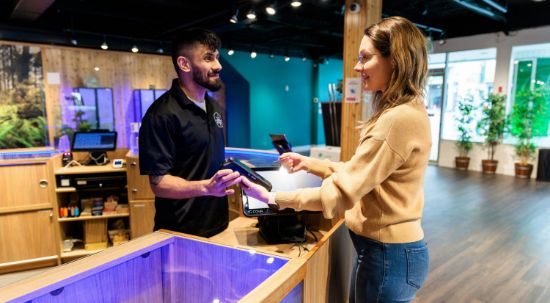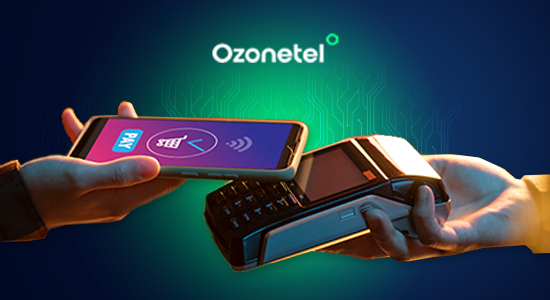- Resources
- What is Customer Perception? (And Tips to Manage It)
What is Customer Perception? (And Tips to Manage It)

Customer perception is the difference between a one-time buyer and a loyal advocate. It’s how every interaction, from your website experience to customer support responses, adds up to shape what customers think of you. This perception directly impacts their willingness to return, recommend you, or even explore what you offer next.
In this article, we’ll talk about the key elements that influence perception and give you actionable tips to manage it, so you can drive customer loyalty, increase satisfaction, and set your brand apart. Continue reading!
What is Employee Experience?
Employee Experience (EX) is the overall perception employees have of their journey within an organization. It encompasses every interaction and touchpoint, from recruitment and onboarding to daily responsibilities, support systems, and eventual offboarding.
What is Customer Perception?
“The customer’s perception is your reality,” said Kate Zabriskie, author and customer experience consultant. But what exactly does customer perception mean and why should you care about it?
Customer perception is the process by which a consumer gathers information about a product and interprets it to develop an accurate image of that product.
The truth is that consumer views, expectations, and sentiment toward a product, service, or offering are intimately connected to how they perceive their interactions with you. This means that when a customer sees commercials, promotions, consumer feedback, social media feedback, and other product-related content, they form an impression of the product.
This perception has a huge impact on the customer’s purchase decisions and loyalty to a specific brand or company.
Example of Customer Perception
To better understand what customer perception is and how it works, let’s look at an example.
During the COVID-19 pandemic, Apple launched the “Creativity Goes On” campaign to highlight the power of creativity and connection during a challenging time. The campaign showed people drawing on iPads, editing videos on MacBooks and connecting with loved ones over FaceTime.
Apple – Creativity goes on ft. John Kransinski, Lily James, Oprah Winfrey
It also featured familiar faces like Oprah Winfrey and Lily James, adding credibility and appeal. But, how did this impact the customer’s perception of Apple?
- Reinforced Apple’s image as a supportive, customer-centric brand during difficult times.
- Created an emotional connection by showcasing real-life creative uses of Apple products.
- Strengthened customer loyalty by positioning Apple products as important tools for creativity and connection.
- Enhanced brand appeal, making customers more likely to choose Apple when considering new devices.
Importance of Customer Perception
Perception influences more than just individual purchases; it shapes long-term relationships between customers and brands. This is frequently evident in customer retention rates and brands’ capacity to continue collecting meaningful feedback and intelligence from their loyal customers.
Some more reasons why customer perception in important are:
- Drives Purchase Decisions: A positive perception makes customers more likely to buy from you, while a negative perception can drive them away, even if your product is high-quality or affordably priced.
- Shapes Brand Reputation: Positive perceptions encourage customers to share their experiences with others, building a strong image through word of mouth. However, a poor perception can do the opposite—when customers feel let down, they’re more likely to share negative feedback, which can make it challenging to attract new buyers.
- Boosts Customer Loyalty: When customers believe in your brand and have good experiences, they’re more likely to stick around, repurchase, and even upgrade their subscriptions or services.
- Enables Pricing Flexibility: Good customer perception can give you the flexibility to command premium pricing, as customers feel they’re getting value that justifies the cost.
Stages of Customer Perception
The three levels of customer perception are:
- Sensing: This stage focuses on clients’ physical senses. Customers conduct research on items or services offered by various market competitors. They employ bodily sensations such as touch, hearing, sight, and taste to learn more about a product or service.
- Organizing: At this stage, customers assess the value of the information they’ve gathered based on context, personal beliefs, self-perceptions, and other highly subjective aspects. Customers will categorize the thing under review and compare it to other objects in their respective categories at this point. For example, a buyer looking to buy a winter coat may rank garments based on price, color, and thickness during the organizing stage.
- Reacting: Customers make a decision based on their experiences in the ‘sensing’ and ‘organizing’ stages. They also consider online evaluations and suggestions from friends and family. Although each reaction and its underlying circumstances differ, purchasers often go through similar evaluation procedures before making a decision.
Factors Influencing Customer Perception
Several factors can influence customer perception, including the ones listed below:
Social Media
When a social media audience receives continuous communication about a product, they form an image of the product. Social media can be used to share content, photographs, videos, and so on, all of which contribute to the company’s desired perception.
Customer Support
How you support your clients reveals a lot about how you perceive them. Excellent customer service demonstrates that you care and invest in the customer experience. Poor customer service, on the other hand, indicates that you either do not care or are unable to provide adequate assistance. Neither of these enhances clients’ impressions of your company.
Influencers
People tend to buy products after another person has tried and tested them. People who buy it initially and use it become influencers. When consumers hear about a fantastic product that the influencer has tried, they are more likely to buy and try it because the advice came from a known person they trust.
Personal Experience
Customer impression is heavily influenced by the personal experience a customer has when purchasing and utilizing a certain product. Customers will form a positive view of the brand if the quality, customer service, price, logo, color, discounts, and so on leave a lasting impression on them. However, if consumers do not love their experience with the brand, it will create a lasting impression.
Brand Values
Your brand values can frequently determine your public image. Many brands, including Patagonia, Dove, Ben & Jerry’s, and Truist, make their principles central to their operations and the products and services they offer. Customers may choose to buy from you based on your beliefs and what you stand for, so incorporate your brand values into your business and allow them to shape client perception.
Customer Reviews
Many individuals research user reviews before purchasing a product. This demonstrates that customer reviews have a vital role in determining customer perception. For example, if a product gets less stars, it leaves a negative impression on the consumer’s mind.
Tips to Improve Customers’ Perception of Your Brand
Customer perception is a broad concept, ranging from the standard of customer service you provide to your effective marketing activities. The following tips will help you improve consumer perception, boost customer relationships, and increase brand loyalty:
Identify Your Audience
Understanding your customers goes beyond basic demographics like age and gender. Instead, you need to analyze their behaviors—how they consume information, interact with each other, and what drives them to choose your brand.
For example, Dove successfully transformed its brand perception by launching the “Real Women” campaign in 2004. This initiative featured women of various sizes with makeup-free faces, resonating emotionally with millions and resulting in a 700% sales increase in just six months.
Develop and Maintain a Positive Connection
Studies show that customers who have positive experiences with a brand spend 140% more than those who have negative interactions. Here are some strategies to foster these connections:
- Personalized Customer Service: Tailor your interactions. A quick, personalized response can make customers feel valued. For example, implementing live chat support allows for immediate assistance, enhancing their experience.
- Emotional Engagement: Connect with customers on an emotional level by celebrating holidays or significant events relevant to them.
- Social Media Engagement: Be active on platforms like Instagram and Facebook by engaging with followers through polls, contests, and relatable content.
Be Open to Feedback
Customer feedback is a goldmine for improvement. Ignoring negative feedback can hinder your growth. Instead, welcome it as an opportunity to enhance your products and services:
- Collect Feedback Proactively: Utilize polls, surveys, and direct calls to understand customer sentiment. Consider creating a dedicated private Facebook group for discussions and suggestions.
- Implement Changes: Show your customers that you value their input by acting on their feedback. Communicate any changes you make based on their suggestions, reinforcing their importance to your brand.
- Leverage User-Generated Content
- With nearly five billion social media users, customers often seek authentic experiences shared by others:
- Showcase UGC: Feature posts from satisfied customers using your product. For example, highlight a customer’s creative use of your product on your social media channels, enhancing authenticity and trust.
- Encourage Sharing: Create campaigns that encourage users to share their experiences. Contests or hashtags can motivate customers to post about your brand, increasing visibility and engagement.
Share Real Customer Testimonials
Word of mouth remains a factor behind customer perception, with 92% of people trusting recommendations from strangers:
- Display Testimonials Prominently: Use your website and social media to showcase genuine testimonials. Video testimonials can be particularly persuasive, as they convey authenticity.
- Incorporate Stories: Share detailed customer stories that highlight how your product or service solved a problem for them. This storytelling approach helps potential customers relate to your brand.
How to Measure Customer Perception?
Okay, you have implemented most of the above strategies to manage the customer’s perception of your brand. But how do you know if it’s working or not? To measure this, you need to track a few important elements such as:
Customer Surveys
Customer surveys allow you to gauge customer satisfaction, loyalty, and the overall experience. When using these surveys, keep track of the following metrics:
| Metric | Definition | How to Calculate | Purpose |
|---|---|---|---|
| Customer Satisfaction (CSAT) Score | Measures customer satisfaction with a specific interaction or overall experience. | Percentage of customers who rate their satisfaction as “satisfied” or “very satisfied.” | To assess immediate customer satisfaction levels and identify areas for improvement. |
| Net Promoter Score (NPS) | Gauges customer loyalty and likelihood to recommend the brand to others. | Subtract the percentage of detractors (scores 0-6) from promoters (scores 9-10). | To evaluate overall customer loyalty and predict future growth. |
| Customer Effort Score (CES) | Measures the ease of customer interaction with a company. | Average score based on responses to how easy it was to resolve an issue or complete a task. | To identify friction points in the customer journey and enhance user experience. |
Online Reviews and Ratings
Reviews on platforms like Google Reviews and Yelp provide candid, public feedback that can heavily influence new customer perceptions. By regularly monitoring and responding to reviews—both positive and negative—you show that you’re engaged and responsive.
Social Media Monitoring
Social media monitoring involves tracking brand mentions, hashtags, and customer comments across various social platforms to gain real-time insights into customer sentiment.
For example, suppose a coffee shop launches a new seasonal drink. By monitoring social media platforms, the shop can track mentions of the drink and analyze customer reactions. If many customers express enthusiasm about the flavor but mention that the drink is too sweet, the shop can use this feedback to adjust the recipe or offer customization options.
Additionally, by keeping an eye on trending topics and recurring themes in customer comments, you can identify potential pain points and capitalize on opportunities for engagement.
Website Analytics
Metrics such as bounce rate, session duration, and conversion rate offer insights into how visitors interact with your site. For example, high bounce rates or short session times can indicate dissatisfaction or confusion.
Customer Support Interactions
By categorizing support tickets and tracking recurring issues, you can identify areas where customers may be struggling or finding success. Also, there are various tools such as Ozonetel that will help you manage and analyze these interactions, enabling you to fine-tune your support processes and proactively address customer needs.
Sales Data and Conversion Rates
Sales data reflects how customer perception translates into buying behavior. Tracking conversion rates, response to promotions, and customer retention can reveal how well your offerings align with customer expectations. A CRM system like Salesforce can help segment this data, allowing you to analyze buying trends and tailor customer experience strategies to improve perception across different demographics.
Top Examples of Omnichannel Customer Experience
After all that theoretical information, let’s look at the top examples of companies that have excelled at implementing omnichannel customer experience strategy:
Disney

From booking a trip on a mobile-responsive website to using the My Disney Experience tool for trip planning, Disney has connected every touch point. In the park, the Disney mobile app helps navigate attractions, check wait times, and manage Fast Passes. Plus, the Magic Band enhances convenience by serving as a room key, food ordering tool, and photo storage device.
How to Implement It:
- Create an integrated mobile app or tool for seamless planning and bookings.
- Offer personalized touch points across all channels, such as smart tech that recognizes guests.
- Use a loyalty program that links all aspects of the customer experience, from purchases to interactions.
Healthians

Healthians integrate multiple platforms to make healthcare services more accessible and efficient. Their online platform and mobile app allow customers to book lab tests, track health data, and receive reports—all while providing reminders for scheduled services. The experience is consistent, whether you book via the website or app, ensuring customer convenience.
How to Implement It:
- Offer real-time updates and appointment tracking across online and offline channels.
- Provide a personalized health journey that links data from various touchpoints.
- Ensure easy access to services through a unified platform (app or website).
Non-Banking Financial Company
A leading NBFC company implemented an intelligent, multilingual IVR system to automate 50% of inbound queries like account statements, welcome letters, and payment rescheduling. Service requests trigger WhatsApp notifications, keeping customers informed in real-time. This system improves satisfaction and frees up agents to handle complex queries.
How you can implement it:
- Automate routine queries through an IVR system.
- Use WhatsApp for real-time notifications and updates.
- Focus agent resources on complex queries by automating simpler ones.
BigBasket

BigBasket leverages an omnichannel approach by integrating technologies like route optimization and chatbots, enabling customers to quickly access service through multiple channels. The use of advanced analytics and in-app tools reduces the need for customer service intervention while improving the overall customer experience.
How you can implement it:
- Integrate technologies like route optimization for better service efficiency.
- Use chatbots to handle routine queries and reduce agent involvement.
- Provide detailed product information through apps to empower customers.
Starbucks

Starbucks excels in omnichannel experience with its mobile app, allowing customers to check and reload their rewards card, place orders ahead, and pay. Integration across all platforms ensures that any changes to the rewards card are updated in real-time, enhancing convenience and encouraging repeat purchases.
How to Implement It:
- Offer a mobile app that syncs account details and loyalty points across all touchpoints.
- Implement real-time updates, such as balance reloading or order status tracking.
- Use AI to personalize offers and enhance customer engagement.
Chipotle

Chipotle’s omnichannel experience stands out with its mobile app that allows customers to place orders for pickup or delivery. The app remembers past orders, making the process faster and more convenient. Customers enjoy a seamless experience whether ordering from home or in-store, reducing wait times and increasing customer satisfaction.
How to Implement It:
- Create an easy-to-navigate mobile app that remembers customer preferences and past orders.
- Enable customers to place orders ahead and pick them up when ready.
- Integrate payment and loyalty programs seamlessly across all channels.
Sephora

Sephora creates a seamless omnichannel experience by integrating its Beauty Bag feature with in-store shopping. Customers can use the app to explore products, create a shopping list, and even virtually try on makeup. This integration makes it easier for customers to access and purchase products both online and offline.
How to Implement It:
- Integrate in-store features with mobile apps, such as virtual try-ons or wishlists.
- Offer an easy-to-use app that enhances the shopping experience and encourages repeat visits.
- Provide consistent customer support across various channels like chat and in-store assistance.
Tools Required to Deliver Omnichannel CX
While an omnichannel CX strategy offers various benefits, implementing it successfully requires the right set of tools to manage and integrate multiple customer touchpoints. Some of these tools include:
Ozonetel

Ozonetel CX Hub is an omnichannel customer experience platform that helps businesses automate and personalize customer interactions. It integrates AI, automation, and routing tools to manage both digital and voice communication, ensuring smooth service delivery.
Key Features:
- AI and automation for first-level support
- Omnichannel routing with complete customer context
- Deep integrations with CRM and contact center tools
- Customizable self-service IVRs and chatbots
G2 Rating: 4.6/5
User Review: “The best thing about Ozonetel is the easy UI, ease of calling customers as well. Another feature I do like about Ozonetel is the call transfer feature. We can connect customers with another executive in a hassle free way.”
Zendesk

Zendesk is a cloud-based customer service platform that helps businesses provide efficient customer support across multiple channels. It streamlines communication by integrating emails, chats, phone calls, and social media in one unified interface, making it easier for agents to manage all customer interactions.
Key Features:
- Omnichannel support (chat, email, social media, and voice)
- AI-powered chatbots for quick responses
- Automation for ticket routing and task management
- Self-service portals and knowledge base
- G2 Rating: 4.3/5
User Review: “The platform integrates a variety of support channels—email, chat, social media, phone, and even messaging apps—into one centralized hub, making it easy to manage all customer interactions in a single place.”
Freshworks

Freshworks offers a simple, efficient customer support system that helps businesses manage customer queries through multiple channels. It provides tools like ticket management, a knowledge base, and community forums, all designed to improve response time and customer satisfaction.
Key Features:
- Ticket management and tracking
- Knowledge base and community forums for self-service
- Multiple communication channels for support (email, chat, phone, social media)
- Analytics and reporting tools
G2 Rating: 4.5/5
User Review: “The best part about Freshdesk is that it is user-friendly, tracking the performance of all the users at one go and easy to download customized reports.”
Salesforce

Salesforce is a comprehensive customer relationship management (CRM) platform that integrates all customer data into one unified system. It supports omnichannel engagement by connecting sales, service, and marketing, providing a complete view of the customer journey.
Key Features:
- Omnichannel engagement tools for personalized communication
- Advanced analytics for customer insights
- Powerful integrations with third-party applications
- Scalable platform for business growth
G2 Rating: 4.4/5
User Review: “The integration of other channels with the CRM helped our agents to provide a 360 personal experience to our customers.”
Zoho CRM

Zoho CRM is a user-friendly platform that offers sales force automation, marketing tools, and customer service features. It helps businesses manage customer interactions from one central system, offering an affordable solution for businesses of all sizes.
Key Features:
- Sales force automation and lead management
- Marketing automation tools
- Multi-channel support for email, social media, and chat
- Integration with other Zoho apps
G2 Rating: 4.1/5
User Review: “Having a complete view of customer needs and preferences allows me to offer better service and increase their loyalty.”
Wrapping Up
Understanding and managing customer perception is about more than tracking satisfaction scores—it’s about truly stepping into your customers’ shoes to see what they see. This means listening closely to their feedback, recognizing the moments that matter most to them, and building experiences that make every interaction feel valuable.
Remember, a single great experience can create advocates, but a single negative one can just as easily turn customers away. Moreover, with tools like Ozonetel’s CX Hub, you can create the experience that modern customers expect—fast, unified, and personalized.
From AI automation for first-level support to omnichannel routing and deep CRM integrations that provide agents with complete customer context, CX Hub makes connecting with your brand effortless for customers.
Conclusion: How Ozonetel Helps Deliver Omnichannel CX
Delivering a seamless omnichannel customer experience is all about creating a consistent, personalized journey that makes customers feel understood and valued, no matter how or where they interact with your brand.
However, the real challenge lies in integrating these touchpoints in a way that enhances communication and resolves issues efficiently, without customers needing to repeat themselves or wait too long for resolutions.
This is where Ozonetel comes in. With its unified CX platform, Ozonetel simplifies the management of multiple communication channels by integrating AI, automation, and deep CRM integrations. It also ensures that every customer interaction is personalized and context-rich, whether it’s through voice, chat, or email.
Additionally, by automating routine queries and offering advanced omnichannel routing, Ozonetel not only saves valuable agent time but also delivers faster, more efficient service, boosting overall customer satisfaction.
Want to see what Ozonetel can do for your company? Sign up today for a free 7-day trial.
Prashanth Kancherla
Chief Operating Officer, Ozonetel Communications
Over the past decade, Prashanth has worked with 3000+ customer experience and contact center leaders...
Chief Operating Officer, Ozonetel Communications
Over the past decade, Prashanth has worked with 3000+ customer experience and contact center leaders to comprehensively understand the need for effective and efficient customer communications at every step of their journey with a brand. Deeply embedded in today’s CCaaS ecosystem, he has been instrumental in Ozonetel's growth and contributed in various roles including product management, sales, and solution architecture.
Frequently Asked Questions
The 4 C’s of omnichannel focus on ensuring a seamless and integrated customer experience across all touchpoints. They are:
- Customer: Understanding customer preferences and behaviors to personalize their experience.
- Convenience: Ensuring that customers can easily access services and information, regardless of the channel.
- Consistency: Providing a uniform experience across all channels, so customers receive the same quality of service no matter where they engage.
- Communication: Ensuring effective and clear communication between the business and the customer across all channels.
Netflix’s omnichannel strategy revolves around providing a seamless entertainment experience across multiple platforms, including TV, mobile devices, laptops, and more. The company also ensures consistency in content availability, recommendations, and user preferences, regardless of the device used.
To measure omnichannel customer experience, businesses should track:
- Customer Satisfaction (CSAT): Collect feedback from customers on their experience across different touchpoints.
- Net Promoter Score (NPS): Measure customer loyalty by asking how likely customers are to recommend the brand after interacting with different channels.
- Customer Effort Score (CES): Assess how easy it is for customers to resolve issues or complete tasks across various channels.
- Channel Performance: Monitor the effectiveness of individual channels (e.g., mobile, in-store, online) and their contribution to overall satisfaction.
- Retention Rates: Analyze how well omnichannel strategies influence customer retention and lifetime value.







